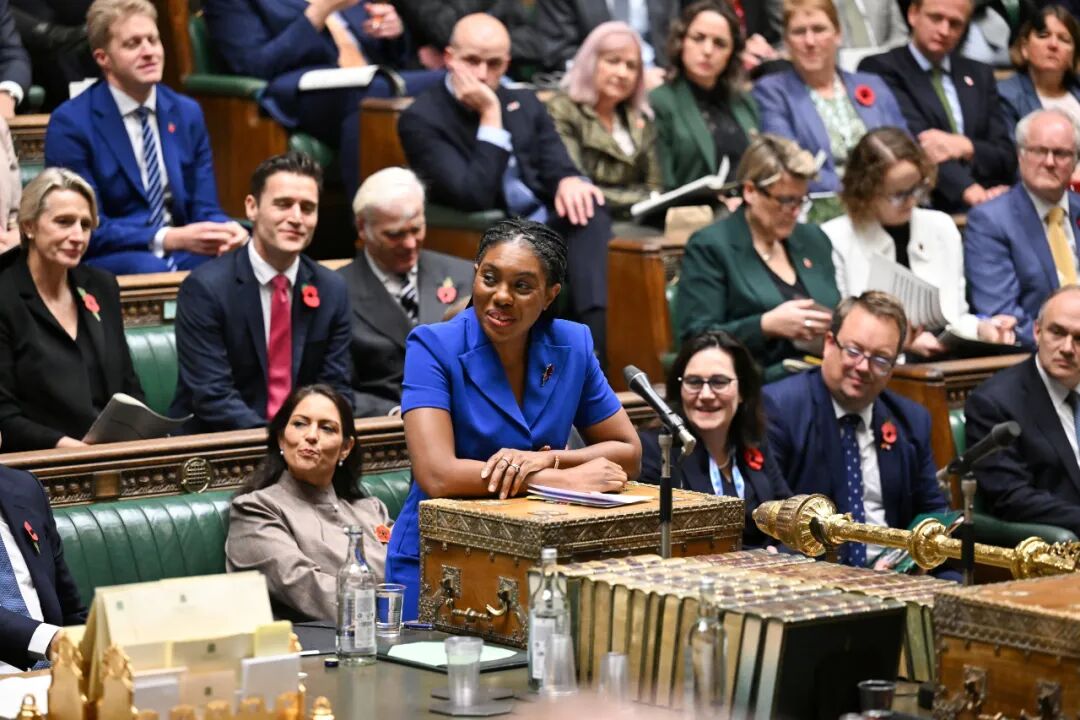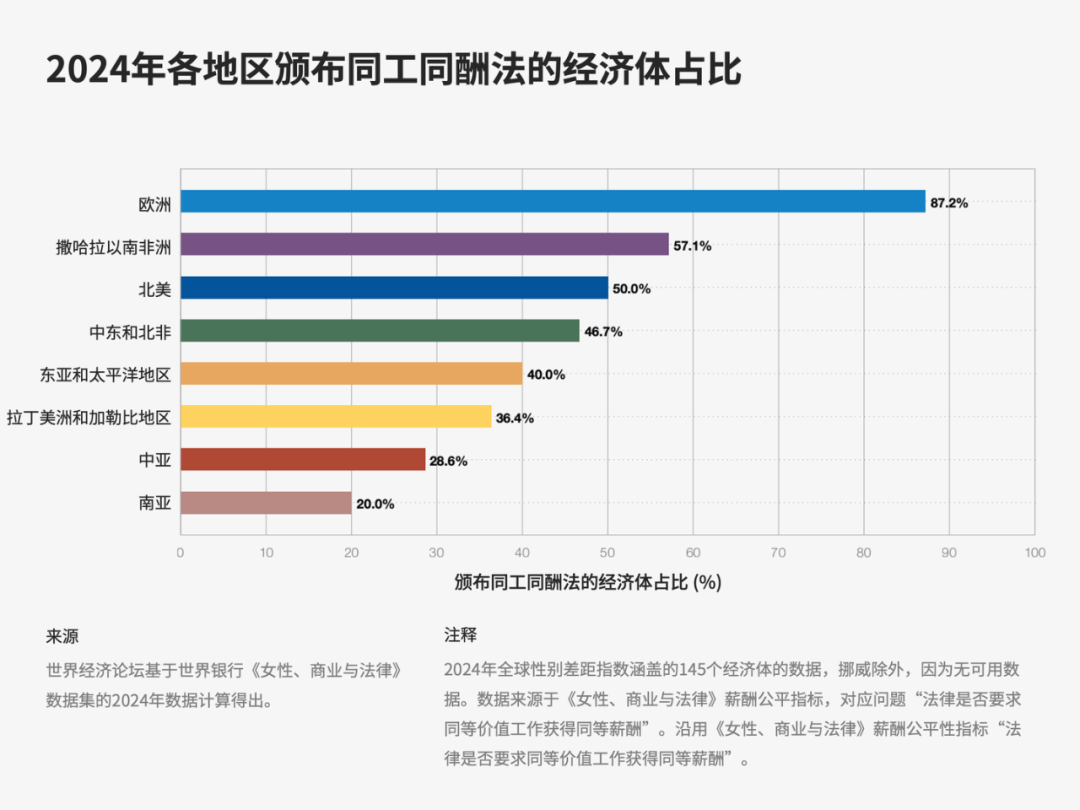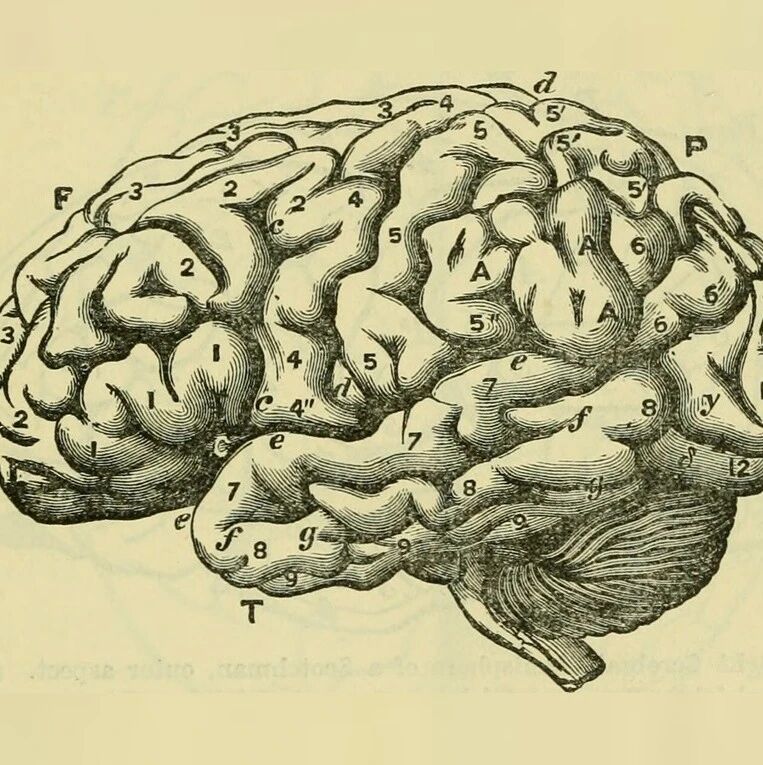

Political gender equality can foster gender equality in the workplace, which is crucial for the future of the professional environment.
Image source: REUTERS
Katica Roy
CEO and Founder of Pipeline Equity
Women make up half of the global population, yet they hold only 26.5% of parliamentary seats and 22.9% of ministerial positions worldwide.
This political imbalance isn’t just about representation—it also has real economic implications for the future workplace.
The gender gap in political leadership also translates into an economic disparity, a gap that must be narrowed to achieve both equity and sustained economic prosperity.
The future workplace isn’t just about technology, automation, or skill development—it’s fundamentally about power. Currently, the distribution of power remains deeply unequal. While women make up half of the global population, they hold only 26.5% of parliamentary seats and 22.9% of ministerial positions worldwide. This political imbalance isn’t just a matter of representation; it also has tangible economic consequences.
When women hold political power, the economy tends to grow. For every 10% increase in women’s representation in parliament, GDP rises by 0.7%. Countries with higher levels of female political representation often implement labor market policies that promote gender equality—such as paid family leave, wage transparency, and robust childcare infrastructure. These policies not only benefit women but also boost labor force participation, enhance productivity, and ultimately drive economic growth.
However, despite decades of progress, it will still take us 169 years to achieve gender parity in political representation. Without structural policy adjustments, inequalities in the labor market will persist, stifling the economic potential of half the global population. As artificial intelligence disrupts industries, demographic shifts reshape societies, and economic uncertainty rises, closing the gender gap at the political leadership level is not only a moral imperative but also an economic necessity.
The power of political representation in shaping the labor market
Political decisions shape the labor market. From tax policies and healthcare systems to education and workplace regulations, the laws currently being crafted determine the economic opportunities available in the future. And if women are absent from leadership roles, policies aimed at addressing gender-based barriers in the workforce are all too often overlooked.
Ongoing research shows that when women hold public office, they prioritize social policies that foster economic growth—such as education, healthcare, paid parental leave, and robust childcare support. These are not merely "women's issues," but rather strategic initiatives that drive economic expansion by boosting labor-force participation, enhancing productivity, and ultimately strengthening long-term economic stability.
Closing the gender gap in employment could boost global GDP by $12 trillion—equivalent to an 11% increase in global economic output. However, achieving this goal will require significant, structural policy adjustments. And when women are placed in leadership roles, these changes can accelerate even further.
Countries with higher female political representation tend to implement stronger labor policies, leading more quickly to the narrowing of gender gaps. For instance, in nations that have enacted pay transparency laws and gender-equal parental leave policies, the likelihood of women holding government positions is significantly greater. Conversely, in countries where women’s political representation remains low, equal pay and robust labor protections often lag behind.
The message is clear: if we want to create a fair labor market, we need more women involved in shaping the rules.

The proportion of economies across regions that have enacted equal pay for equal work laws in 2024
Image source: World Economic Forum's 2024 Global Gender Gap Report
How female politicians are advancing gender-equal labor policies
The relationship between women's political representation and labor policies promoting gender equality has been thoroughly documented. When women hold leadership positions, the legislation they champion reflects a broader, more inclusive vision of economic success.
1. Paid Parental Leave and Parenting Investments
Paid parental leave and accessible childcare services are crucial for maintaining women’s labor force participation and narrowing the gender pay gap. During the COVID-19 pandemic, women’s unpaid work surged by 153%, and they still shoulder 2.8 more hours of unpaid labor daily than men.
Countries with strong female leadership are more likely to invest in early childhood education and paid family leave. For instance, in Iceland—where women hold 48% of parliamentary seats—the country boasts one of the most progressive parental leave policies globally, offering equal, paid time off to both mothers and fathers. As a result, female labor-force participation has increased, while family caregiving responsibilities have become more evenly distributed.
In contrast, in the United States, where women hold only 28% of congressional seats, paid family leave remains a fragmented system, making it more likely for women to drop out of the workforce.
2. Pay Transparency and Equal Pay for Equal Work
The Pay Transparency Act requires companies to disclose salary information, helping to narrow the gender pay gap more quickly. In countries like Germany, Canada, and the UK—where women hold a higher proportion of leadership roles—the requirement for pay transparency is already contributing to a reduction in the wage gap.
In the European Union, where women’s political representation averages 32%, the recently adopted Pay Transparency Directive now requires companies to report gender pay gaps and provide reasonable explanations for any disparities in compensation. These policies reflect the political leadership’s commitment to prioritizing economic fairness.
In contrast, in countries with lower political representation of women, progress in narrowing the gender pay gap remains stalled, largely due to weaker enforcement of legislation.
3. Providing retraining for women in the fields of technology and artificial intelligence
By 2030, artificial intelligence and automation are expected to displace 92 million jobs worldwide, making skills training the key determinant of success in the future workplace. However, current training programs fail to close the gender gap, resulting in underrepresentation of women in fields such as AI, big data, and fintech.
Governments with stronger female leadership tend to invest in gender-specific retraining programs. For instance, Canada’s government—where women make up 50% of ministers—supports the implementation of the "Women Entrepreneurship Strategy," which funds initiatives aimed at enhancing women’s skills in STEM fields and high-growth industries.
Without female leadership advocating for these policies, women risk being left behind in the digital economy.
Breaking the 169-year-old barrier to political leadership
At the current rate of progress, we’re still nearly two centuries away from achieving gender equality in political representation. So, how can we accelerate this much-needed transformation?
1. Implement a political representation gender quota system
Countries that have adopted gender-quota systems for political positions have seen faster and more sustained increases in women’s representation, leading to significant policy and economic transformations. Rwanda currently leads the world in the proportion of female parliamentary representatives. In 2003, the country introduced a legal gender quota mandating that at least 30% of parliamentary seats be reserved for women. Thanks to this quota system—and coupled with strong political commitment—the share of female lawmakers has surged to 61%, surpassing that of most high-income nations.
Mexico, Argentina, France, and Norway have also achieved positive results by implementing quota systems. However, gender quotas still face challenges. In some cases, formalism may lead to women being nominated without genuine decision-making power. Nonetheless, data shows that gender quotas can significantly accelerate the increase in women’s political representation and drive policy changes that benefit both the economy and society as a whole. As more countries adopt these measures, the global workforce will ultimately reap the rewards of a fairer, more inclusive economic system.
2. Removing Structural Barriers in Political Campaigns
Women face particularly daunting challenges when running for public office, including financial barriers, partisan biases, and unpaid caregiving responsibilities. Policy interventions can help accelerate progress—for instance, by providing female candidates with campaign funding support and leadership training.
Women face significant financial barriers when running for public office, raising less campaign funding than men, which limits their competitiveness. In the U.S., female candidates for Congress raise 29% less funding than their male counterparts; meanwhile, in Mexico, female candidates collected 38% less public funding than men before gender-equality reforms were implemented.
Party bias and unpaid caregiving responsibilities further limit women’s opportunities to run for office. Countries like New Zealand, Canada, and Sweden have already introduced parental leave policies specifically designed for female politicians, aiming to remove the barriers posed by caregiving duties. Eliminating these financial and structural obstacles is crucial for achieving gender equality in leadership roles.
3. Enhancing Accountability in the Private Sector
Government and businesses must work together to ensure that corporate leadership reflects the demographic makeup of the workforce. In countries where corporate boards embrace greater gender diversity, labor policies promoting gender equality tend to be stronger as well, since the public and private sectors influence each other positively.
The future workplace requires gender equality in leadership.
Legislative decisions, corporate policies, and public investments are shaping the future of the workplace. If current trends continue, women will likely remain underrepresented in terms of political power and economic opportunities.
But we have the opportunity to choose. By electing more women, supporting female leadership, and pushing for structural reforms, we can ensure that policies shaping the labor market reflect the entire workforce—rather than just a select few.
The gender gap in political leadership also translates into an economic disparity. Closing this gap isn’t just a matter of fairness—it’s essential for charting a path toward economic prosperity.

The above content solely represents the author's personal views.This article is translated from the World Economic Forum's Agenda blog; the Chinese version is for reference purposes only.Feel free to share this in your WeChat Moments; please leave a comment at the end of the post or on our official account if you’d like to republish.
Translated by: Di Chenjing | Edited by: Wang Can
The World Economic Forum is an independent and neutral platform dedicated to bringing together diverse perspectives to discuss critical global, regional, and industry-specific issues.
Follow us on Weibo, WeChat Video Accounts, Douyin, and Xiaohongshu!
"World Economic Forum"


